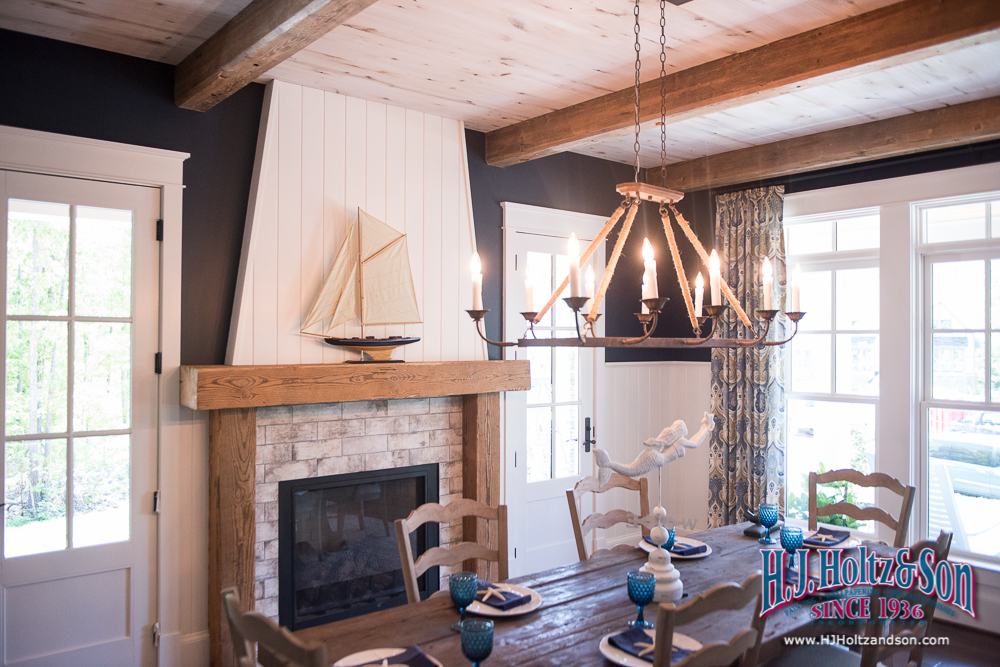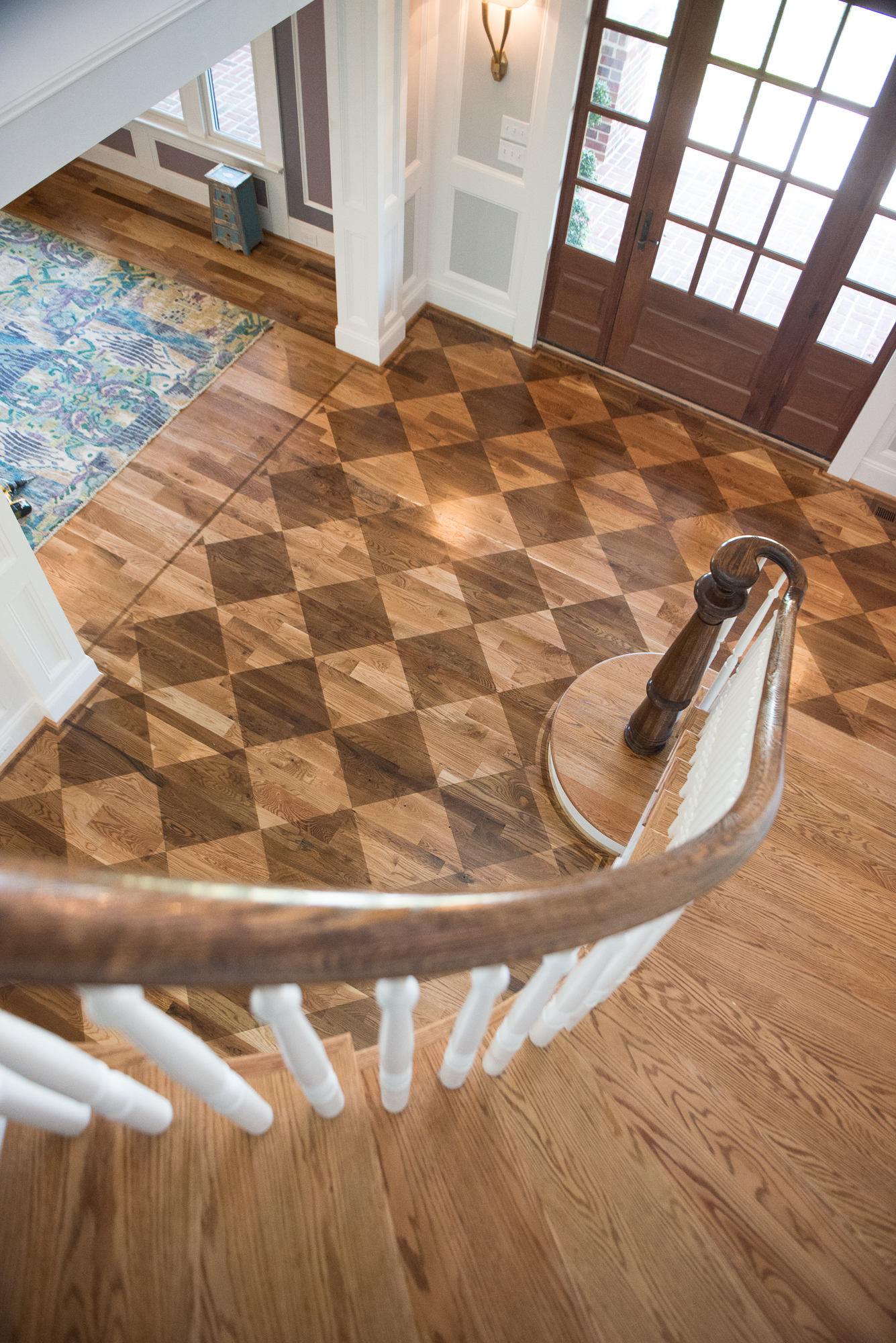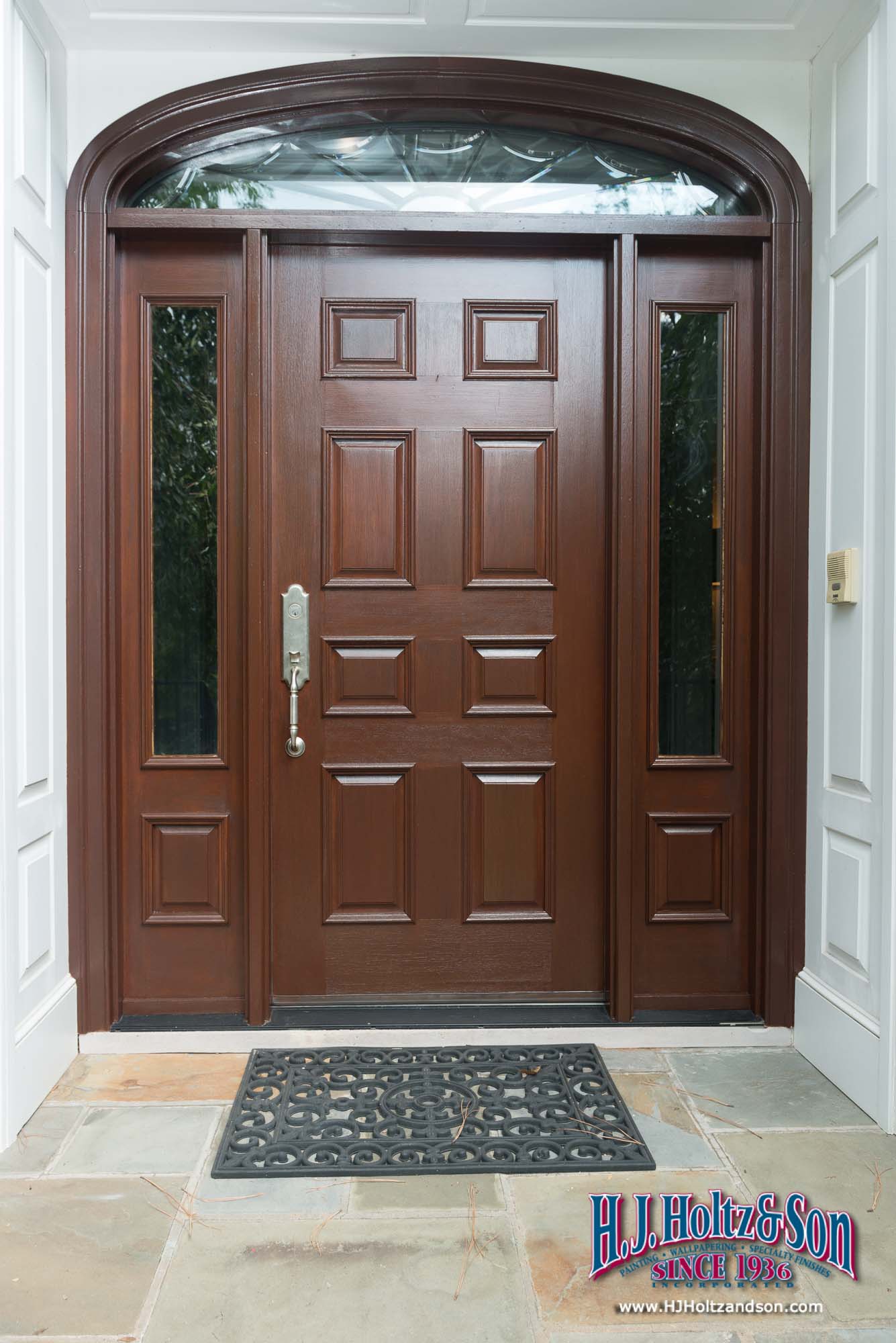Refinishing stained wood can bring the room it’s in back to life or even transform the curb appeal of a home or business. Look around — do you notice stained wood in your space? If it doesn’t look like new, you may have thought that’s just the way it has to be. Things age.
Not so fast… Restoration techniques and products allow us to bring wood that may seem too far gone back to life.
Where We Find Stained Wood
Especially in older homes, stained wood is likely to be found in several places – front doors, garage doors, trim, floors, ceiling beams, stairs & railings, walls, window sills and window sashes. Wood that is outdoors or inside, but around windows, often sustain considerably sun and condensation damage.


Symptoms That Stained Wood Needs Refinishing
While “stained” is of course the type of wood we’re talking about, “stains” aren’t a good thing. When the wood surface has been compromised, water can seep into the fibers and leave stains that look like water streaks. This can even lead to mold. Other signs that your stained wood is aching to be refinished:
- dull surface
- dry feeling
- raised grain
- color changes such as light spots or dark streaks
- obvious peeling of the varnish
Depending upon how exposed the stained wood is to sun or weather, it may need attention only every few years or as frequently as annually.
Options For Giving Stained Wood New Life
Refinishing stained wood is just one option. In many cases a homeowner actually wants a completely different look. In those cases, painting over the stained wood can yield a dramatic and eye-catching result. To keep the same stained-wood look, we follow the steps outlined below to restore the wood to its former glory.
If the wood damage is simply too great, our carpenters can work alongside designers and artists to replace the wood completely. Really, there is no limit to what is possible. Let’s say, for example, that you liked having the wood, but wanted it to look like a completely different wood variety — changing oak to mahogany, for example. We would simply put our decorative artists to work using paint and faux bois techniques to create a completely different stained wood look!

Benefits Of Refinishing Stained Wood
Compromised wood will not heal itself. When the surface gets dry and the wood is unprotected, it becomes open to warping, mold, and rot. As long as it is caught before the point of no return, refinishing is possible — and a whole lot cheaper than replacing.
How We Refinish Stained Wood
Just like with our approach to painting, we recognize that thorough preparation is critical to getting a great looking, long lasting result. When tackling your stained wood refinishing project, we start by protecting any hardware or surrounding areas. For example, we meticulously cover handles and locks on front doors or garage doors.
Next, we sand down any worn areas of the wood. If there has been excessive damage that requires removal of a significant amount of material, the entire piece may need to be stripped in order to create a uniform surface.
Once we’ve sanded the wood thoroughly, we mix and test stain samples to make sure we achieve the proper color. After making any corrections to the stain, we apply it throughout the wood’s nooks, crannies and crevices.
For the new look to last as long as possible, we cover the entire surface with a clear protective coating. For interior woodwork, we use a polyurethane. For exterior stained wood, we use a varnish or urethane coating, necessary for providing a barrier between the wood and the weather and sun’s harmful rays.
Ideally, the protective coat is well maintained so that the stained wood itself is never exposed. Depending upon the exposure to weather and sunlight, the coating may need to be reapplied every year or every few years. One of our experts can help determine the right interval.


What To Do Next
Your stained wood needs to be refurbished periodically and protected to stay beautiful as long as possible. The first choice to make is the look that you prefer: restored to original beauty, painted, or transformed into a different type or color of wood. If you’re struggling with that decision, we may be able to help. Schedule a consultation for ideas and even to see examples of painted and stained wood “in the flesh” in our one-of-a-kind design studio.
